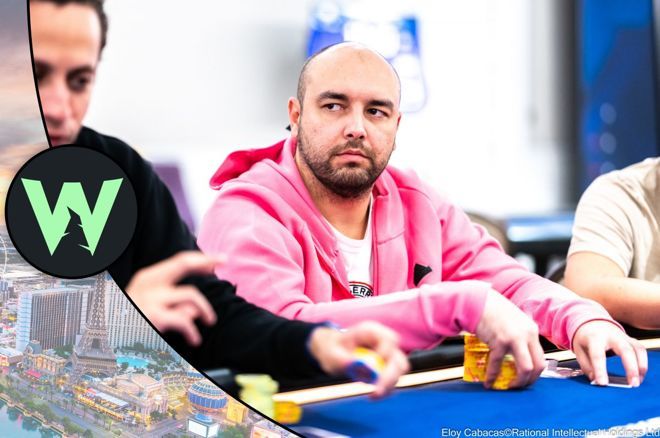
The PokerStars European Poker Tour (EPT) is renowned for attracting the world’s elite poker players, all hoping to stake their claim in some of the most significant tournaments in the field. One of the highlights of this year’s tour was the $50,000 Super High Roller event at EPT Cyprus, where strategies, bluffs, and high-pressure decisions converged to create riveting poker gameplay. In a notable hand, Ognyan Dimov embarked on an audacious triple-barrel bluff against seasoned opponent Steve O’Dwyer. Let’s break down the hand and the strategy involved in this fascinating encounter.
The Hand Breakdown
The Setup
Early in Day 2 of the tournament, Dimov found himself facing O’Dwyer in a three-bet pot, with O’Dwyer holding an effective stack of around 50 big blinds. Tensions rose as both players navigated a complex board, leading to several pivotal decisions made under pressure.
Blinds: 3,000/6,000 with a 6,000 ante
Action:
- Dimov raised from under the gun, and O’Dwyer three-bet to 45,000 from the button.
- Dimov called, setting up the intrigue for the subsequent streets.
Flop Action
The flop revealed a 7♠ 6♣ 5♠. Dimov, taking an unconventional approach, led out for 22,000—an action that caught the attention of everyone at the table, especially given the potential for straights and flushes.
O’Dwyer opted to call, demonstrating his confidence in the strength of his hand.
Evaluating the Flop Strategy
While donk betting may seem appealing, GTO (Game Theory Optimal) specialists often warn against it. Dimov’s choice to bet may have given him an initial advantage, but it revealed his overall strategy. Typically, he should have more medium equitability hands (e.g., Ace or King-high) that hit this board poorly, favoring a check to induce action from O’Dwyer.
After analyzing the GTO Wizard hand analysis, it’s clear that Dimov’s donk bet, while not optimal, could have carried some merit had he bet with a very particular intent. O’Dwyer’s response to just call was a standard play given he didn’t need to rush the pot’s growth.
Turn Dynamics
The Q♠ on the turn provided another layer of complexity. Dimov sized up his bet to 65,000, which was reasonable given the board now included overcards. Yet, with many QX hands present in his range (like AQ, KQ), he indeed had the opportunity to bet smaller and more frequently.
Despite an ideal situation for Dimov to build his narrative, he persisted with his A♦ 3♦, a hand not typically suited for this aggressive line.
River Resolution
The J♠ on the river was a swingy card that added to the flush possibilities and tilted Dimov’s narrative. He fired a third barrel of 75,000, which pushed O’Dwyer into a moment of intense contemplation, spurring him to use up his time banks before eventually making the call.
Confident in his pair of Kings (K♥ K♦), O’Dwyer showed wisdom in calling, a decision based on Dimov’s perceived bluffing frequency and the overall narrative of the hand.
Strategy Insights from GTO Wizard
Flop Analysis
From a GTO perspective, Dimov’s donk bet was not statistically favorable, given that half his range should consist of medium-strength hands instead of going for an aggressive stance. O’Dwyer’s call in response was perfectly aligned with low-to-medium protection principles, showcasing his poise in the face of a potential bluff.
Turn Analysis
On the turn, the Queen significantly altered the board’s landscape, favoring Dimov’s perceived range. Although his sizing of 45% met acceptable playability, he should have focused on continuing his story more conservatively with most of his value hands.
River Analysis
The river was where Dimov truly faltered. The J♠ did not bolster his narrative; it instead reduced his bluffing capacity significantly. GTO principles suggest that Dimov should have drastically cut back on his bluffing range there—an insight that O’Dwyer skillfully recognized before committing to his call.
Conclusion: Lessons Learned in High-Stakes Play
This hand between Ognyan Dimov and Steve O’Dwyer serves as a rich lesson in poker strategy and psychology. Dimov’s aggressive bluffing strategy, while bold, appeared overambitious against a highly skilled opponent who adeptly assessed the situation. O’Dwyer’s decision to call was not merely a function of cards but an intelligent read on Dimov’s tendencies and the overall flow of the hand.
As players around the world ponder this exchange, it underscores poker’s complex blend of strategy, risk-taking, and psychological warfare—a perfect encapsulation of the thrill found within the European Poker Tour.

.jpeg?ssl=1)











